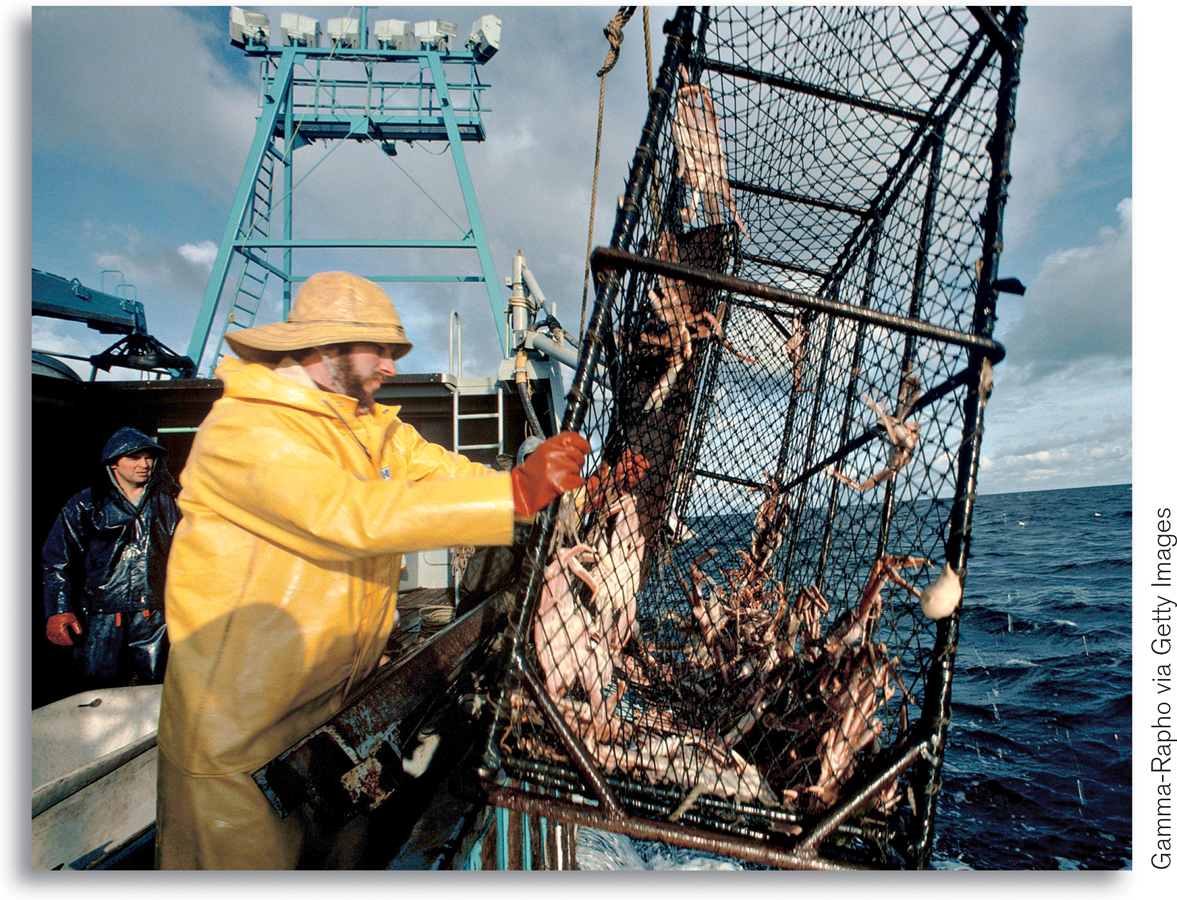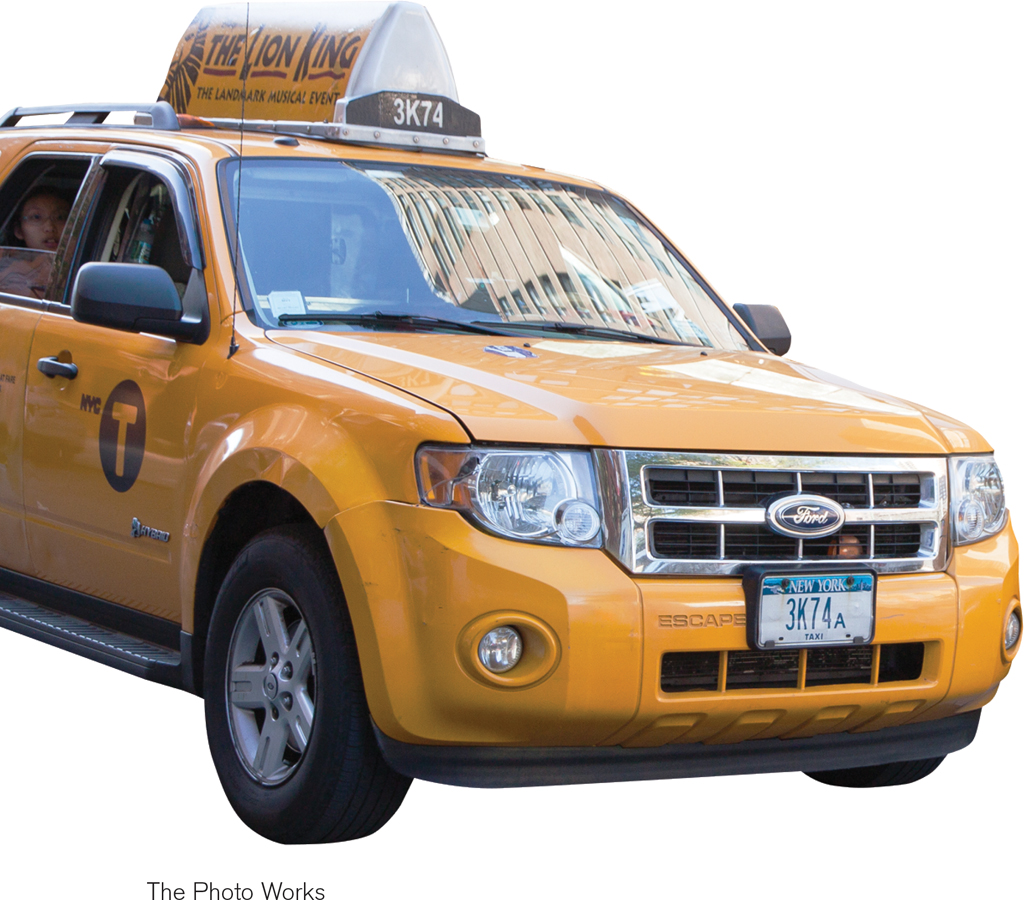The Costs of Quantity Controls
Like price controls, quantity controls can have some predictable and undesirable side effects. The first is the by-
The same is true for the next 1 million rides: New Yorkers would be willing to pay at least $5 per ride when the quantity of rides is increased from 9 to 10 million, and taxi drivers would be willing to provide those rides as long as they got at least $5 per ride. Again, these rides would have occurred without the quota limit.
Only when the market has reached the unregulated market equilibrium quantity of 10 million rides are there no “missed-
Generally, as long as the demand price of a given quantity exceeds the supply price, there is a missed opportunity. A buyer would be willing to buy the good at a price that the seller would be willing to accept, but such a transaction does not occur because it is forbidden by the quota.
And because there are transactions that people would like to make but are not allowed to, quantity controls generate an incentive to evade them or even to break the law. New York’s taxi industry again provides clear examples. Taxi regulation applies only to those drivers who are hailed by passengers on the street. A car service that makes prearranged pickups does not need a medallion. As a result, such hired cars provide much of the service that might otherwise be provided by taxis, as in other cities. In addition, there are substantial numbers of unlicensed cabs that simply defy the law by picking up passengers without a medallion. Because these cabs are illegal, their drivers are completely unregulated, and they generate a disproportionately large share of traffic accidents in New York City.
In fact, in 2004 the hardships caused by the limited number of New York taxis led city leaders to authorize an increase in the number of licensed taxis by 900. The city auctioned off an additional 2,000 medallions in 2013, bringing the total number up to the current 15,000 medallions—
But those who already owned medallions were less happy with the increase; they understood that adding new taxis would reduce or eliminate the shortage of taxis. As a result, taxi drivers anticipated a decline in their revenues because they would no longer always be assured of finding willing customers. And, in turn, the value of a medallion would fall. So to placate the medallion owners, city officials also raised taxi fares: by 25% in 2004, by a smaller percentage in 2006, and again by about 17% in 2012. Although taxis are now easier to find, a ride now costs more—
In sum, quantity controls typically create the following undesirable side effects:
Inefficiencies, or missed opportunities, in the form of mutually beneficial transactions don’t occur
Incentives for illegal activities
ECONOMICS in Action: Crabbing, Quotas, and Saving Lives in Alaska
Crabbing, Quotas, and Saving Lives in Alaska
Alaskan king and snow crab are considered delicacies worldwide. And crab fishing is one of the most important industries in the Alaskan economy. So many were justifiably concerned when, in 1983, the annual crab catch fell by 90% due to overfishing. In response, marine biologists set a total catch quota system, which limited the amount of crab that could be harvested annually in order to allow the crab population to return to a healthy, sustainable level.
Notice, by the way, that the Alaskan crab quota is an example of a quota that was justified by broader economic and environmental considerations—
The Alaskan crabbing season is fairly short, running roughly from October to January, and it can be further shortened by bad weather. By the 1990s, Alaskan crab fishermen were engaging in “fishing derbies,” made famous by the Discovery Channel’s Deadliest Catch. To stay within the quota limit when the crabbing season began, boat crews rushed to fish for crab in dangerous, icy, rough water, straining to harvest in a few days a haul that could be worth several hundred thousand dollars. As a result, boats often became overloaded and capsized. Crews were pushed too hard, with many fatalities from hypothermia or drowning.
According to federal statistics, at the time Alaskan crab fishing was among the most dangerous of jobs, with an average of 7.3 deaths a year, about 80 times the fatality rate for an average worker. And after the brief harvest, the market for crab was flooded with supply, lowering the prices fishermen received.

In 2006 fishery regulators instituted another quota system called quota share—aimed at protecting crabbers as well as Alaska’s crabs. Under individual quota share, each boat received a quota to fill during the three month season. Moreover, the individual quotas could be sold or leased. These changes transformed the industry as owners of bigger boats bought the individual quotas of smaller boats, shrinking the number of crabbing boats dramatically: from over 250 a few years earlier to about 60 in 2012. Bigger boats are much less likely to capsize, improving crew safety.
In addition, by extending the fishing season, the quota-
Predictably, an Alaskan crab fisherman earns more money under the quota-
Quick Review
Quantity controls, or quotas, are government-
imposed limits on how much of a good may be bought or sold. The quantity allowed for sale is the quota limit. The government then issues a license— the right to sell a given quantity of a good under the quota. When the quota limit is smaller than the equilibrium quantity in an unregulated market, the demand price is higher than the supply price—
there is a wedge between them at the quota limit. This wedge is the quota rent, the earnings that accrue to the license-
holder from ownership of the right to sell the good— whether by actually supplying the good or by renting the license to someone else. The market price of a license equals the quota rent. Like price controls, quantity controls create inefficiencies and encourage illegal activity.
4-3
Question 4.4
Suppose that the supply and demand for taxi rides is given by Figure 4-7 but the quota is set at 6 million rides instead of 8 million. Find the following and indicate them on Figure 4-7.
The price of a ride
The quota rent
Suppose the quota limit on taxi rides is increased to 9 million. What happens to the quota rent?
Question 4.5
Assume that the quota limit is 8 million rides. Suppose demand decreases due to a decline in tourism. What is the smallest parallel leftward shift in demand that would result in the quota no longer having an effect on the market? Illustrate your answer using Figure 4-7.
Solutions appear at back of book.
Medallion Financial: Cruising Right Along
Back in 1937, before New York City froze its number of taxi medallions, Andrew Murstein’s immigrant grandfather bought his first one for $10. Over time, the grandfather accumulated 500 medallions, which he rented to other drivers. Those 500 taxi medallions became the foundation for Medallion Financial: the company that would eventually pass to Andrew, its current president.
With a market value of $385 million in late 2013, Medallion Financial has shifted its major line of business from renting out medallions to financing the purchase of new ones, lending money to those who want to buy a medallion but don’t have the sizable amount of cash required to do so. Murstein believes that he is helping people who, like his Polish immigrant grandfather, want to buy a piece of the American dream.
Andrew Murstein carefully watches the value of a New York City taxi medallion: the more one costs, the more demand there is for loans from Medallion Financial, and the more interest the company makes on the loan. A loan from Medallion Financial is secured by the value of the medallion itself. If the borrower is unable to repay the loan, Medallion Financial takes possession of his or her medallion and resells it to offset the cost of the loan default. As of 2013, the value of a medallion has risen faster than stocks, oil, and gold. Over the past two decades, from 1990 through 2013, the value of a medallion rose 720%, compared to 500% for an index of stocks.

But medallion prices can fluctuate dramatically, threatening profits. During periods of a very strong economy, such as in 1999 and 2001, the price of New York taxi medallions fell as drivers found jobs in other sectors. When the New York economy tanked in the aftermath of 9/11, the price of a medallion fell to $180,000, its lowest level in 12 years. In 2004, medallion owners were concerned about the impending sale by the New York City Taxi and Limousine Commission of an additional 900 medallions. As Peter Hernandez, a worried New York cabdriver who financed his medallion with a loan from Medallion Financial, said at the time: “If they pump new taxis into the industry, it devalues my medallion. It devalues my daily income, too.”
Yet Murstein has always been optimistic that medallions would hold their value. He believed that a 25% fare increase would offset potential losses in their value caused by the sale of new medallions. In addition, more medallions would mean more loans for his company.
As of 2013, Murstein’s optimism had been justified. Because of the financial crisis of 2007–
QUESTIONS FOR THOUGHT
Question 4.6
How does Medallion Financial benefit from the restriction on the number of New York taxi medallions?
Question 4.7
What will be the effect on Medallion Financial if New York companies resume widespread use of limousine services for their employees? What is the economic motivation that prompts companies to offer this perk to their employees? (Note that it is very difficult and expensive to own a personal car in New York City.)
Question 4.8
Predict the effect on Medallion Financial’s business if New York City eliminates restrictions on the number of taxis. That is, if the quota is removed.